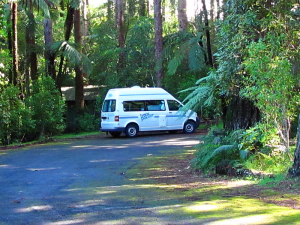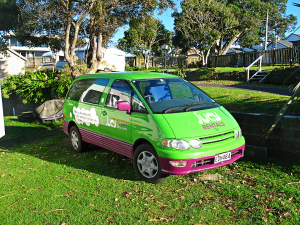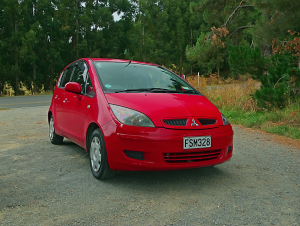
Unabridged nature is surely one of the main reasons people come to New Zealand. Getting away from it all on one of the physically most isolated countries in the world. But there’s unfortunately more to this than meets the eye. I’ll leave aside the question for the moment whether all that you can see in New Zealand is nature and address how you might get to those places where nature still exists, and enjoy them at the same time.
In the four recent trips down under, I used a variety of vehicles, summarised in Table 1.
| Year | Company: Vehicle (class) | Paid in € | Paid in $ | Duration | $/day | €/day |
| 2009 | bestcamper/Jucy: Lucinda | 1343 | 55 | 61 | 24.4 | |
| 2010* | bestcamper/thl: VW Hitop | 1004 | 55 | 37 | 18.3 | |
| 2013 | Wendekreisen: Econocar | 1289 | 37 | 37 | 22.2 | |
| 2015 | AVR: Demio | 1483 | 38 | 39 | 25.3 | |
| Table 1. Car and van rental comparison. *Winter rental, paid price included €330 third party insurance | ||||||
Although the prices seem very comparable, they are not. For one the winter rental of 2010 was so cheap, that having a little extra insurance seemed reasonable. Secondly the rate of NZD/EUR has risen from 0.4 in 2009 to 0.55 in 2010 and around 0.65 in 2015. This means that € prices will have increased by nearly 75% in that time. Thirdly, only rental costs were recorded for all vehicles. At around 130 km of driving each and every day, the petrol costs cannot be ignored. Also, it would be fair to include other transportation costs such as taxis and buses to make the figures completely comparable.

As to the vehicles themselves, I have nothing but praise for the cars: They get you from place to place with a suitcase or two packed away (the Demio in particular was very roomy). But it was the campers that gave more food for thought. The Lucinda is not much more than a big car that could be used for sleeping but had no electrical equipment. And if you slept in the back, the suitcase had to go on the front seat. The Hitop, on the other hand, could be plugged in (which kept a fridge working), and you could stand up in it (which was comfortable at least) but neither had any space for putting stuff and both had plenty of stuff that was just not needed (sinks and water tanks).
All of these vehicles had in common that I needed a place to sleep (camping ground, motel, hotel, hostel) every night, because councils almost everywhere have forbidden overnight parking. This is a question of planning: Find a motorcamp, pay the $20 (often not much more) and have your shower, use the kitchen, do your washing, meet people.

One thing I’ll gladly do is defend campermate.co.nz and their app, CamperMate. Use them to find out all sorts of useful information, including interesting sites that are off the beaten track, and where public toilets are. Only don’t rely on finding a free campsite through them, go somewhere and pay your $20.
Anyhow, I’ve decided for this trip to do away with a rental vehicle and see if I can do the trip by any other means, and for this purpose I have set a budget of the costs of all transport for the last trip, around $2,100 (which, considering the first camper cost close to $3,700, is already pretty stingy). Certainly the two items on the short program, the Stewart Island Southern Circuit and the Dusky Track won’t require a vehicle for 20 days. As of publication, all inland travel has been booked: Flights from AKL to IVC, IVC/Stewart Island, DND/NSN, NSN/AKL, buses from Invercargill to Te Anau and from there to Dunedin, and the transfer to and fro the Dusky Track for just under $1100, so there is still $1000 in the tin. Still to be booked/paid are the Stewart Island water taxi, transfers to the tramps/kayak tours at the top end.
So before you decide you need to cart your shit from one free camping site to the next, consider some real freedom. Might well be good for both the environment and your wallet.
References
https://www.radionz.co.nz/news/national/319668/freedom-campers-overrun-surf-spot, accessed Dec 11, 2016
https://organisemybiz.com/news/worldnews/international-newsoutlets/12/04/toilet-chained-shut-to-force-freedom-campers-from-taranaki-surf-spot/, accessed Dec 11, 2016
https://www.campermate.co.nz, accessed Dec 31, 2018
